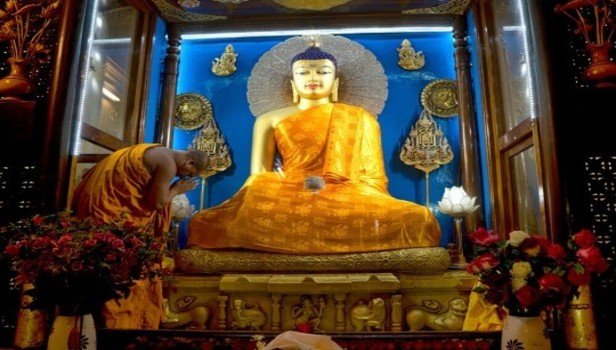Change of Religion has Improved the Life and Educational Level of the Buddhist Dalits
02 Jul 2017 ( Perwez Anwer, MD & CEO, IBTN GROUP )
In India, the number of people who believe in Buddhism is close to 84 lakh, in which 87 percent people have made a change of religion. Most of the people who adopt Buddhism by turning religion into a dalit community who became Buddhists to avoid the caste oppression of Hinduism. The remaining 13 percent of the Buddhist population comes from the traditional Buddhist community living in the Northeastern states and areas of the Northern Himalayas.
Those people who adopt Buddhism, are called neo-Buddhists and this neo-Buddhist community is in a better position from today's Hindu Dalit community in terms of literacy rate, job share and gender equality. This has been revealed in the analysis of the figures of census 2011 by India Spend.
In India, 87 percent of Buddhist community is converted to a Buddhist population, and most of it comes from the Hindu Dalit community, on the basis of which it can be said that the development of people of Buddhism is actually the development of a dalit community.
In India, the literacy rate of those who believe in Buddhism is 81.29 percent, which is more than the national rate of 72.98 percent. At the same time, literacy rate among Hindus is 73.27 percent, while the literacy rate among scheduled castes is much below 66.07 percent.
Sattpal Tanwar, leader of the Bhim Army, accused of communal violence in Saharanpur on May 5, 2017, says, "Most of the top-level Dalit leaders present in the organization are Buddhists."
Bhim Army had been discussing in the past due to the large number of Dalits turning the religion of Buddhism. Tanwar says, "That's because Buddhist religion gives confidence to him rather than caste system."
Literacy in Chhattisgarh is 87.34 percent in Buddhist population, while Maharashtra has 83.17 percent and Jharkhand has 80.41 percent.
Significantly, the highest number of Buddhists to be converted into religion is in Maharashtra, followed by Madhya Pradesh, Karnataka and Uttar Pradesh.
The example of Maharashtra in this case is the most unique. 5.81 percent of the total population of Maharashtra is Buddhist, whose total population is close to 65 lakh and Maharashtra is ahead of all states in this case.
It is noteworthy that the Indian Constitution Maker B. R. Ambedkar was a resident of Maharashtra and in 1956, he converted to religion with only 60,000 supporters in Maharashtra and adopted Buddhism.
This kind of protest against caste system continues to this day, although the number of people who have converted to religion has definitely declined. Literacy among the Buddhist community in Uttar Pradesh is 68.59%, which is higher than the state's average literacy (67.68%) and is much higher than the literacy of Scheduled Castes (60.88%) living in the state. The literacy rate of women (74.04%) in the Buddhist community is also good, which is much better than the 64.63 literacy rate of women in the whole country.
In 2011, there was 965 sex ratio on 1,000 per people between Buddhist community, whereas sex ratio was 945 between Scheduled Castes across the country, while National level of sex ratio was 943.
Professor Nitin Tangade of Savitribai Phule University of Pune said, "Due to lack of agricultural land or the lack of traditional profession, the Dalits of Maharashtra chose the path of education to get jobs. Therefore, in pursuing education and moving towards the cities, they are ahead of other communities."
(Click here for Android APP of IBTN. You can follow us on facebook and Twitter)
Share This News
About sharing
-
 16 Sep 2025
UN inquiry finds Israel’s war on Gaza to be genocide
16 Sep 2025
UN inquiry finds Israel’s war on Gaza to be genocide
UN inquiry finds Israel’s war on Gaza to be genocide
-
 16 May 2025
Has Donald Trump taken US-Gulf relations to a new era?
16 May 2025
Has Donald Trump taken US-Gulf relations to a new era?
Has Donald Trump taken US-Gulf relations to a new era?
May 16, 2...
-
 16 May 2025
What do the Gulf states gain from the US president's historic trip to the region?
16 May 2025
What do the Gulf states gain from the US president's historic trip to the region?
What do the Gulf states gain from the US president's historic trip to the regio...
-
 15 May 2025
Pakistan FM: US didn't force the ceasefire with India | Talk to Al Jazeera
15 May 2025
Pakistan FM: US didn't force the ceasefire with India | Talk to Al Jazeera
Pakistan FM: US didn't force the ceasefire with India | Talk to Al Jazeera
-
 15 May 2025
How will the lifting of US sanctions help Syrians rebuild their country?
15 May 2025
How will the lifting of US sanctions help Syrians rebuild their country?
How will the lifting of US sanctions help Syrians rebuild their country?



